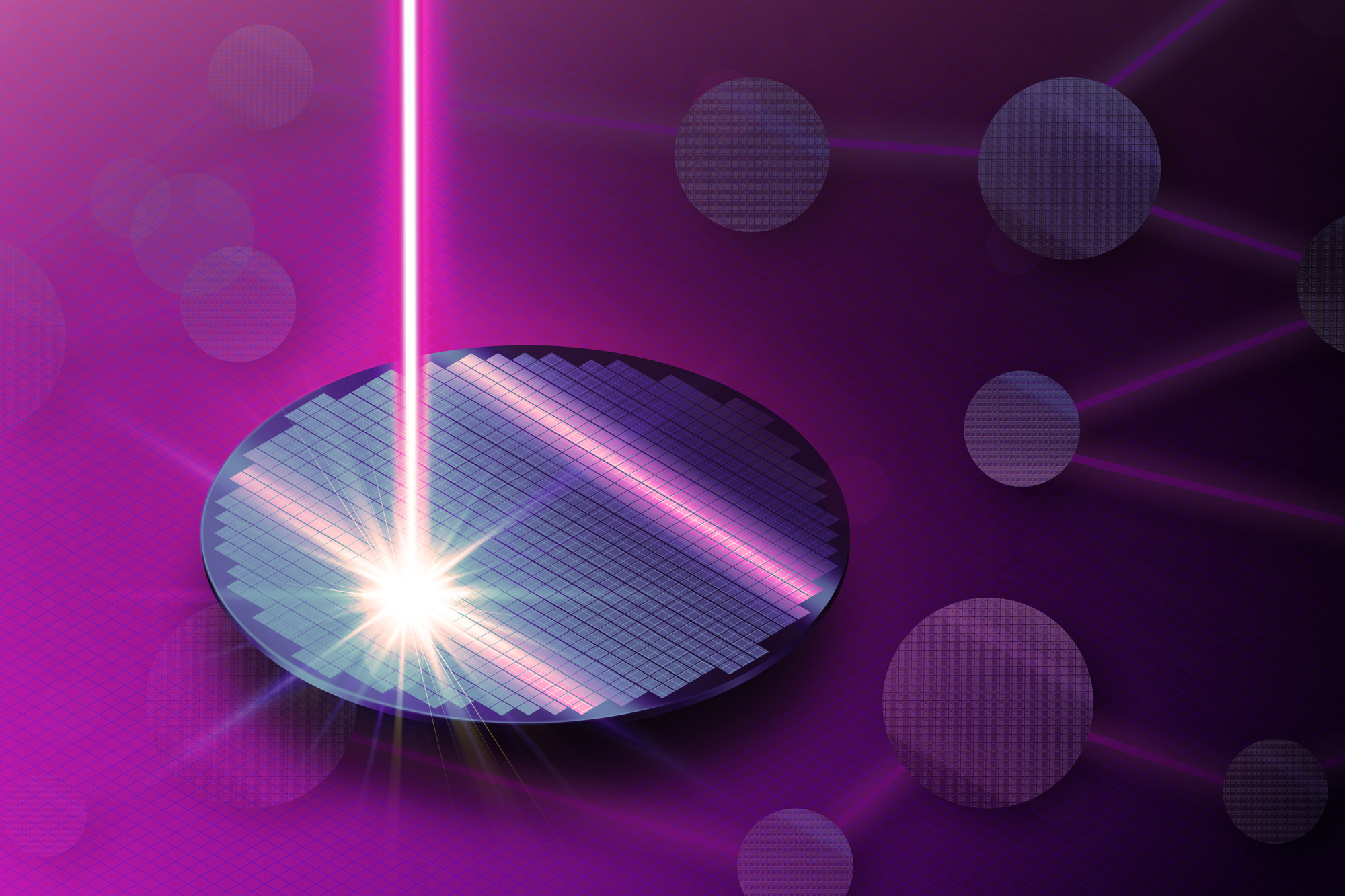
Photolithography includes manipulating mild to exactly etch options onto a floor, and is usually used to manufacture pc chips and optical gadgets like lenses. However tiny deviations in the course of the manufacturing course of typically trigger these gadgets to fall in need of their designers’ intentions.
To assist shut this design-to-manufacturing hole, researchers from MIT and the Chinese language College of Hong Kong used machine studying to construct a digital simulator that mimics a selected photolithography manufacturing course of. Their approach makes use of actual information gathered from the photolithography system, so it might extra precisely mannequin how the system would fabricate a design.
The researchers combine this simulator right into a design framework, together with one other digital simulator that emulates the efficiency of the fabricated gadget in downstream duties, resembling producing photographs with computational cameras. These related simulators allow a person to provide an optical gadget that higher matches its design and reaches the perfect job efficiency.
This method might assist scientists and engineers create extra correct and environment friendly optical gadgets for functions like cell cameras, augmented actuality, medical imaging, leisure, and telecommunications. And since the pipeline of studying the digital simulator makes use of real-world information, it may be utilized to a variety of photolithography programs.
“This concept sounds easy, however the causes folks haven’t tried this earlier than are that actual information could be costly and there are not any precedents for find out how to successfully coordinate the software program and {hardware} to construct a high-fidelity dataset,” says Cheng Zheng, a mechanical engineering graduate pupil who’s co-lead creator of an open-access paper describing the work. “We’ve taken dangers and completed intensive exploration, for instance, creating and making an attempt characterization instruments and data-exploration methods, to find out a working scheme. The result’s surprisingly good, displaying that actual information work rather more effectively and exactly than information generated by simulators composed of analytical equations. Though it may be costly and one can really feel clueless at the start, it’s value doing.”
Zheng wrote the paper with co-lead creator Guangyuan Zhao, a graduate pupil on the Chinese language College of Hong Kong; and her advisor, Peter T. So, a professor of mechanical engineering and organic engineering at MIT. The analysis will probably be introduced on the SIGGRAPH Asia Convention.
Printing with mild
Photolithography includes projecting a sample of sunshine onto a floor, which causes a chemical response that etches options into the substrate. Nevertheless, the fabricated gadget finally ends up with a barely completely different sample due to miniscule deviations within the mild’s diffraction and tiny variations within the chemical response.
As a result of photolithography is complicated and exhausting to mannequin, many present design approaches depend on equations derived from physics. These normal equations give some sense of the fabrication course of however can’t seize all deviations particular to a photolithography system. This could trigger gadgets to underperform in the actual world.
For his or her approach, which they name neural lithography, the MIT researchers construct their photolithography simulator utilizing physics-based equations as a base, after which incorporate a neural community skilled on actual, experimental information from a person’s photolithography system. This neural community, a kind of machine-learning mannequin loosely based mostly on the human mind, learns to compensate for most of the system’s particular deviations.
The researchers collect information for his or her technique by producing many designs that cowl a variety of function dimensions and shapes, which they fabricate utilizing the photolithography system. They measure the ultimate constructions and examine them with design specs, pairing these information and utilizing them to coach a neural community for his or her digital simulator.
“The efficiency of discovered simulators will depend on the info fed in, and information artificially generated from equations can’t cowl real-world deviations, which is why you will need to have real-world information,” Zheng says.
Twin simulators
The digital lithography simulator consists of two separate parts: an optics mannequin that captures how mild is projected on the floor of the gadget, and a resist mannequin that reveals how the photochemical response happens to provide options on the floor.
In a downstream job, they join this discovered photolithography simulator to a physics-based simulator that predicts how the fabricated gadget will carry out on this job, resembling how a diffractive lens will diffract the sunshine that strikes it.
The person specifies the outcomes they need a tool to realize. Then these two simulators work collectively inside a bigger framework that reveals the person find out how to make a design that may attain these efficiency targets.
“With our simulator, the fabricated object can get the very best efficiency on a downstream job, just like the computational cameras, a promising know-how to make future cameras miniaturized and extra highly effective. We present that, even when you use post-calibration to try to get a greater end result, it can nonetheless not be pretty much as good as having our photolithography mannequin within the loop,” Zhao provides.
They examined this system by fabricating a holographic factor that generates a butterfly picture when mild shines on it. When in comparison with gadgets designed utilizing different strategies, their holographic factor produced a near-perfect butterfly that extra intently matched the design. In addition they produced a multilevel diffraction lens, which had higher picture high quality than different gadgets.
Sooner or later, the researchers wish to improve their algorithms to mannequin extra sophisticated gadgets, and in addition take a look at the system utilizing client cameras. As well as, they wish to broaden their method so it may be used with various kinds of photolithography programs, resembling programs that use deep or excessive ultraviolet mild.
This analysis is supported, partially, by the U.S. Nationwide Institutes of Well being, Fujikura Restricted, and the Hong Kong Innovation and Know-how Fund.
The work was carried out, partially, utilizing MIT.nano’s services.
